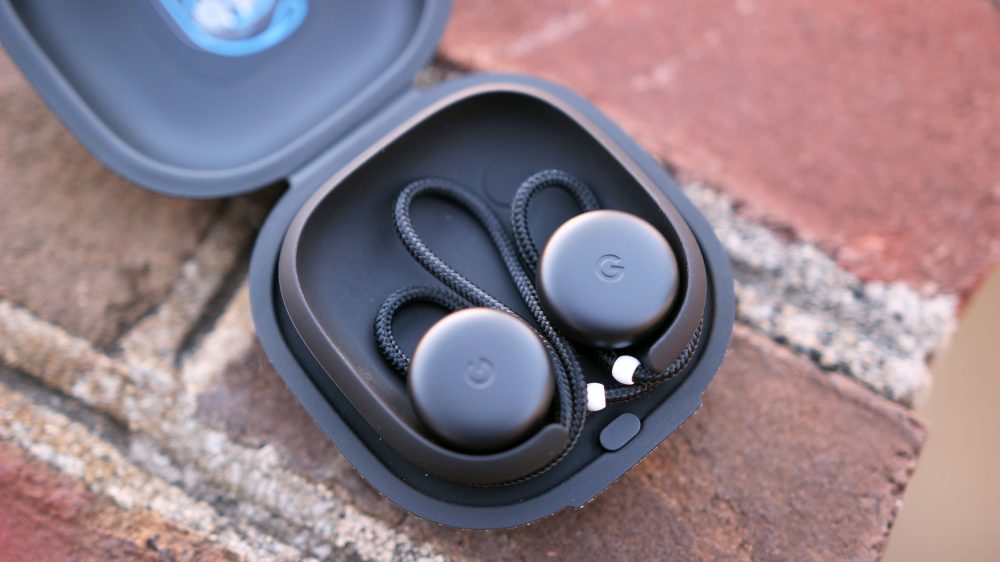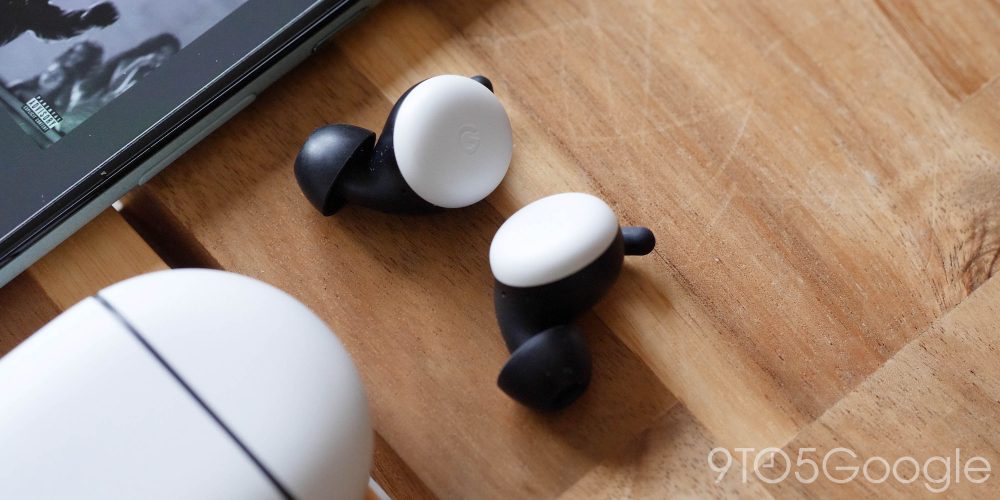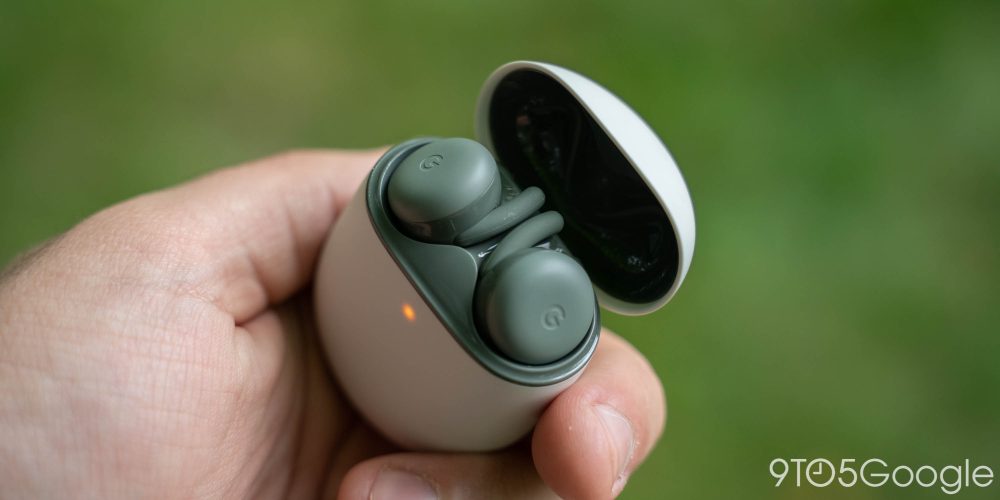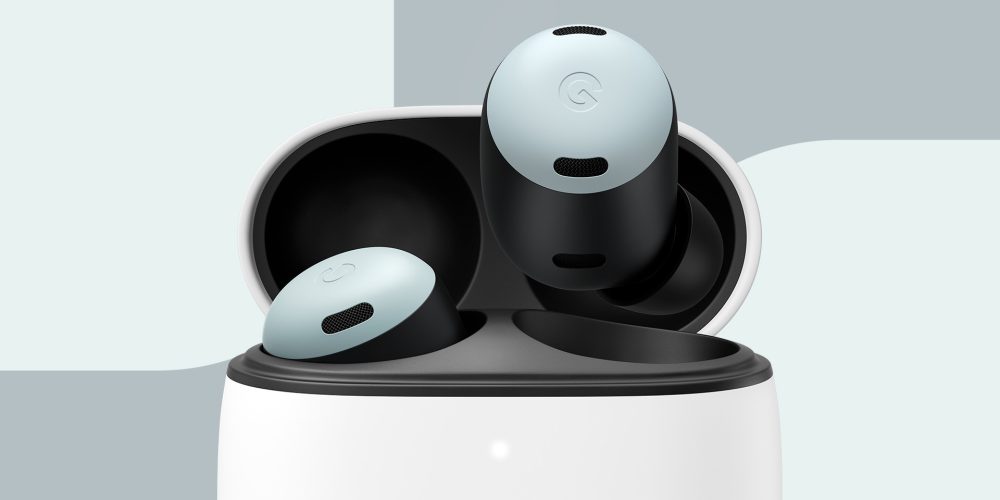
These days, we’re just floating in a sea of truly wireless earbuds that all sort of do the same thing for too much money. While Google has been working with truly wireless earbuds for years now, the first-party buds to come from the company haven’t always been heavy hitters. Now, Google is launching and shipping out the newest in its Pixel Buds lineup – the Pixel Buds Pro. So how did we get here?
One of the major technological developments to come out of 2016 and 2017 in the audio industry is the development and improvement of wireless audio. Apple did it with the AirPods in 2016, with many companies following suit in the years to come.
This transition phase produced some cool products that we look back on fondly – mostly.
Pixel Buds (2017)
One of those products was Google’s first attempt at proprietary earbuds, the Pixel Buds. The Pixel Buds were a wireless pair of earbuds in the sense that the connection between the phone and audio processor in the earbuds was wireless.
There was indeed a wire connecting both earbuds to each other for easy communication between the two drivers, leading to the affectionate nickname given to them – Google Neckbuds. Before truly wireless earbuds started dominating the market, most manufacturers’ solution to wireless earbuds was to connect both drivers with a wire, allowing you to hang them around your neck for convenience. Prior to truly wireless earbuds, this was the pinnacle of modern audio technology.
By this point, Apple’s AirPods had come out, showcasing exactly what was possible in the wireless audio world. In all reality, it’s clearly understandable why Google stuck with the product they had been developing already, and it’s a good thing they did.
The Pixel Buds were an all-around okay pair of earbuds. First and foremost, they incorporated Google Assistant natively, making them some of the best Google Assistant-enabled earbuds at the time. As we noted in our Pixel Buds review back in 2017, Google Assistant was “directly baked in,” creating a pleasing Assistant experience.
Having Assistant built into your earbuds is something I don’t think you can truly appreciate until you’ve tried it, but for me, it’s a massive selling point. I love essentially having a Google Home connected to my ear, always ready to control music, answer questions, and so much more.
One of the issues that a lot of users found with the original Pixel Buds was sound quality – not caused by bad drivers or terrible processing, but caused by fit. The Pixel Buds went for a plastic shell that sat in your ear. Most other earbuds utilize silicone tips inserted into the ear canal. There are a couple of drawbacks to this.

First, there’s no passive noise cancellation – or active for that matter – with the Pixel Buds. All outside noise is free to move in and around the space between your ear canal and the plastic shell of the Pixel Buds. Second, since the tips are not flexible, each person will have a different fit experience. Additionally, the fit is directly related to sound quality. The better the fit is, the clearer the path that audio has to pass through your ear.
Another problem that gave users a lot of grief was the case. The case itself wasn’t bad; rather, the method of storage was the kicker. Since the original Pixel Buds had a wire between both earbuds, Google decided to incorporate them into the storage system. To put them away, you had to wrap the wire within the case in a specific manner. This was a slow and annoying process.

In all, the original Pixel Buds weren’t a terrible deal, especially with top-notch Google Assistant integration. Sad to say, they may have been released a little too late to be a true competitor.
Pixel Buds (2020)
Three years later in 2020, Google finally released what everyone was asking for, addressing most of the complaints that rose around the Pixel Buds in 2017. With the exact same name, the new truly wireless Pixel Buds set out to completely wipe the originals from everyone’s memory.
For the most part, they did just that. Our review concluded:
Google Pixel Buds — what’s the verdict? Personally, I think Google hit an overall home run here. The Buds are comfortable, smart, sound pretty good, and aren’t outrageously priced. For some people, missing features such as noise cancellation could be a deal-breaker, but for others, this is exactly what they want. It all comes down to your preferences.
With added silicone tips and an overall better design, the 2020 Pixel Buds were a very comfortable pair of earbuds to wear. The included silicone fins helped you get a solid fit while keeping ear fatigue down throughout the day.

Additionally, the Pixel Buds included a pass-through vent that allowed you to hear the environment around you if necessary, a feature replaced with ANC in the Pixel Buds Pro. This was a truly divisive feature, with some hating the feature and others finding it genuinely useful.
Perhaps the best thing about the truly wireless Pixel Buds was the carrying case. Likened to a “pebble,” the charging case was extremely easy to fit into any pocket. It didn’t have an overwhelming bulk to it that made slipping it into a jeans or pants pocket uncomfortable. It was in a lot of ways, the perfect case.

As far as sound quality went, the Pixel Buds in 2020 sounded better than the previous iteration, though it still wasn’t mind-blowing. At the time, there were other pairs of truly wireless earbuds on the market that could directly compete with sound quality, like the Jabra Elite 75t. But when looking at the whole package, which included Google Assistant integration and other smart features paired with a great fit, the Pixel Buds were not a bad deal.
The Pixel Buds really seemed to have it all at launch. Unfortunately, a lot of users began to question their purchases when a few issues reared their heads only a month or so after launch.
About six weeks after the Pixel Buds were shipped out to those who pre-ordered, users began noticing weird audio cutouts in their earbuds as well as odd static hissing. These audio cutouts were all generally the same; the Bluetooth connection would drop for about 1 or 2 seconds before picking up again, or even disconnecting “permanently” for some until the buds were placed back in the case. Some users had both earbuds cutting out while others saw only one dropping it at a time. On top of that, the audio drops also happened when the listener turned their head in some cases.
This widespread issue was happening for just about every pair of earbuds; no firmware update seemed to fix the issue. Eventually, Google announced it was working on fixing “stability issues” and that the issue would get resolved.
This issue was never actually fixed in full and that experience left a sour taste in a lot of users’ mouths. The Pixel Buds – beyond the Bluetooth connectivity issues – were a good pair of earbuds. Unfortunately, Bluetooth connectivity is a major player in truly wireless earbuds and ended up being the downfall of the Pixel Buds as they were quickly discontinued when the next model arrived.
Pixel Buds A-series
We didn’t have to wait long after the wireless Pixel Buds came out to get a new pair of earbuds from Google. In March of 2021, we found traces of a new audio product from Google. That new product turned out to be a budget-friendly successor to the Pixel Buds – the Pixel Buds A-series.
Named after the budget-conscious line of phones Google has been known for producing, the Pixel Buds A-series were focused on getting users the most bang for their buck at only $99, a steep drop compared to the $179 Pixel Buds.

Of course, Google had to drop some features for the sake of keeping things affordable. For instance, The Pixel Buds volume control gestures were forfeited in the A-series, though it was made up for in the Pixel Buds A-series’s ability to control volume based on the environment. On top of that, wireless charging was sacrificed, only leaving users with the option of charging over USB-C.
Everything else about the new Pixel Buds was extremely enticing. An improvement was made that allowed both earbuds to connect to the phone rather than a relay system. This makes for a more stable connection and reduced latency in the earbuds. In practice, this dramatically improved Bluetooth performance for the Pixel Buds, making Google’s new earbuds an easy recommendation.
Though Google touted users would experience the same great audio quality as they did in the Pixel Buds, this didn’t entirely ring true in testing. The audio was definitely similar, but not a perfect match. At first, the Pixel Buds A-series lacked in the mids and some songs just felt hollow. After time though, our own Ben noted in his review that the earbuds seemed to need a “break-in period,” with audio quality getting a bit better after several hours of use.

Just like the Pixel Buds before it, the A-series earbuds included a vent for passive pass-through audio. This, once again, proved useful for those wanting to be aware of what was happening around them in busy places. One key complementary feature was Adaptive Sound, which increased or lowered audio depending on your environment’s volume. While the Pixel Buds did have this feature, COVID made it a little difficult to test this feature in real-world environments. Fortunately, the Pixel Buds A-series got it as well – even with cost-cutting measures – and the feature worked very well.
In all, the Pixel Buds A-series may have been the first earbuds Google actually got right. While the price was half the cost of the 2020 Google Pixel Buds, the performance, audio quality, and features that came out of the box with the Pixel Buds A-series proved to make them the best earbuds Google had yet released. That is, until the Pixel Buds Pro.
Pixel Buds Pro
Up until this point, Google had gone through three iterations of wireless earbuds. The first two weren’t much success while the third – Pixel Buds A-series – seemed to do just about everything right.
Announced at Google I/O 2022, the Pixel Buds Pro are a truly exciting pair of wireless earbuds. While being Android-focused first and foremost, the Pixel Buds Pro have a few exciting features we haven’t yet seen in the Pixel Buds line.
Ditching the pass-through vent, the Pixel Buds Pro will have ANC as well as a pass-through mode, utilizing the beamforming mics installed on the buds. Contrary to previous versions, pass-through audio can be turned off when you want it to be. This is a first for the Pixel Buds line, and it will be interesting to hear how the Pixel Buds Pro handles ANC in most environments.

To power audio quality, the Pixel Buds Pro have a custom audio chip designed by Google, and if we know anything, Google does a pretty good job in designing SoCs. In that regard, the Pixel Buds Pro is in line to produce some really nice audio in conjunction with all the smart features it will have.
One of the smartest features we’re excited to see is the eventual rollout of spatial audio. Google stated at I/O that an OTA update would come to the buds “later this year.” Of course, that could mean anytime in the next five months, though it’s an exciting promise.
It’s speculated that this improvement came from the 2021 buyout Google made of 3D audio startup Dysonics. The team at Dysonics is known for working on tech that mimics 360-degree sound, leading to what we know as spatial audio. The company was founded in 2011 by the UC Davis Technology Incubator. After the acquisition, some of the employees from Dysonics noted on their LinkedIn pages that they had started working at Google, two of which noted that they were developing “audio hardware” at the company. At the time, it was hard to nail down which product this might have been for, but looking back at the timing and release a year later of the Pixel Buds Pro, the Dysonics team likely contributed to the final product of the Pixel Buds Pro.
On top of that acquisition and, of course, prior to the Pixel Buds Pro, Google has made a lot of moves to hire and acquire IP from different sources. It was uncovered that Google made a separate deal to buy parts of Synaptics in 2020, which gave Google patents on audio hardware and patent applications covering “active noise cancellation.” The $35 million deal went unnoticed in 2020 and ended in staff moving to Google, including the former VP and GM of audio, Trausti Thormundsson, becoming a product manager at Google.
The year following, Google showed no signs of slowing down and set out to acquire audio IP from RevX Technologies, which has since gone under. The company was known among musicians for developing a device to optimize in-ear monitors for performances and recording sessions. Patents the company had for noise cancellation in headphones also moved to Google during the IP buyout.
A French startup called Tempow was also part of the purchase queue, giving Google insight and team members that had worked on major aspects of smart wireless audio. The company was building the “first OS for true wireless earbuds” and had previously worked with Motorola and TCL.
Looking back at the timing prior to the debut of the Pixel Buds Pro, it’s easy to connect the dots and understand how Google was able to develop and implement a custom audio chip into their new earbuds as well as promising future technologies like spatial audio.

Overall, Google has put a lot of effort into making the Pixel Buds Pro the best of the best. Whether or not that will ring true will be a matter of time. Not only first impressions but also performance over time will matter a drastic amount. Google’s pattern of first impressions versus use over time has not gone unnoticed. Hopefully, the Pixel Buds Pro will be the best truly wireless earbuds we’ve seen in a while.
Pixel Buds Pro are set to go on sale on July 28 and are available for pre-order now. Stay tuned for our full review.
Pre-order Pixel Buds:
- Amazon
- B&H Photo
More on Pixel Buds Pro:
- Pixel Buds Pro have an extended 30-day Google Store return policy
- Google has started shipping some Pixel Buds Pro orders
- Someone got Pixel Buds Pro early; here’s what they look like next to Pixel Buds A-Series
Author: Andrew Romero
Source: 9TO5Google



